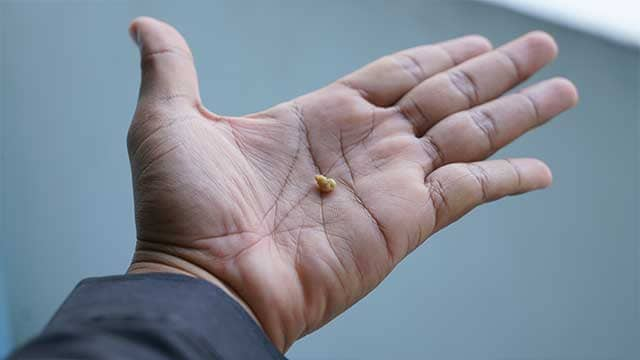-
-

ADULT ORTHODONTICS
Should You Use Mouthwash Before or After Brushing?Brushing and flossing are the foundation of a good oral hygiene routine, but mouthwash can also be a useful addition...

SELECTING DENTAL PRODUCTS
Soft Vs. Hard Toothbrush: Which One Should You Use?The toothbrush has come a long way. As the American Dental Association (ADA) notes...
-
Science & Innovation
- Oral Health and Dental Care | Colgate®
- Oral Health
- Lost Filling Or Crown



Fillings are materials used to fill cavities in the teeth. Crowns cover the tops of damaged teeth. Sometimes, fillings or crowns fall out. In some cases, a filling or crown may come loose because there is decay underneath it. The decay destroys part of the tooth, so it no longer has a tight hold on the crown or filling.
What You Can Do
A lost filling or crown is rarely an emergency. However, it can be painful because the exposed tooth tissue is often sensitive to temperature, pressure or air. If you lose a crown, put it in a safe place and make an appointment to see your dentist as soon as you can.
Don't wait too long. What is left of the tooth will not be as strong as your crown. It could be damaged more without the crown to protect it. Also, when a crown is missing for a long time, your teeth may move into the space where the crown was. If this happens, your crown may no longer fit.
Before you see the dentist, here's what you can do:
- Apply a little clove oil to the sensitive area with a cotton swab. This will give you pain relief. You can buy clove oil in drugstores or in the spice aisles of many supermarkets.
- If you still have the crown, you may be able to slip it back over the tooth. Before you do that, clean the inside of the crown. Then coat the inside of the crown with tooth "cement," which you can buy in the dental section of your pharmacy. Some tooth cements need to be mixed; others don't. If you can't find tooth cement, you can use denture adhesive or even petroleum jelly. These aren't permanent solutions, but they will help to hold the crown in place until you can see your dentist. You should not use any household glues. They are not safe to put in your mouth. They can damage the tooth and crown.
- If you've lost the filling or crown, you can put dental cement directly on the tooth surface. This will help to protect and seal the area until you're able to see your dentist.
What Your Dentist Will Do
Decay may have changed the shape of your tooth. Usually, this means that your dentist will need to prepare the tooth again to ensure the new crown will fit. If the crown does not fit securely, it will come off again.
If you lose a filling, your dentist will remove the decay that developed between the old filling and the tooth, and place a new filling.
3/6/13
© 2002- 2018 Aetna, Inc. All rights reserved.
Related Articles

If you notice anything strange in your mouth, such as a gum boil or a bump that looks like a pimple, it's a good idea to have it checked out by a dentist.

Tonsil stones, clinically called tonsilloliths, are small, white discharges that form in the crevices of the tonsils. They are typically found on the surfaces of the pharyngeal tonsils on either side at the back of the throat. They can be as small as a grain of rice or as large as a pea. They are quite common and usually harmless, but they may spark alarm in patients when noticed for the first time.

Related Products

Helping dental professionals
More professionals across the world trust Colgate. Find resources, products, and information to give your patients a healthier future








